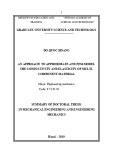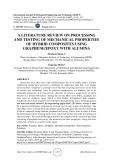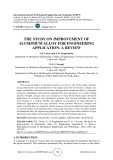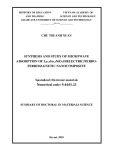
Mechanical properties of the developed material
-
Once the mechanical properties of printed TPU are characterised, a novel, low cost, and environmentally friendly method for concrete casting using printed TPU moulds is proposed in this thesis. Additively manufactured TPU mould is developed to cast complex concrete structures. A planar topologically optimized cantilever and a free-form 3D column are cast using the proposed TPU mould. Good surface quality is obtained for the cast concrete elements, and the moulds can be reused many times after cleaning.
 98p
98p  runthenight04
runthenight04
 02-02-2023
02-02-2023
 10
10
 4
4
 Download
Download
-
Steel fiber reinforced concrete (SFRC) is a multiple-composite material developed during the early 1970s. In SFRC, short steel fibers are randomly distributed in concrete. Steel fibers can prevent the development of micro-cracks inside the concrete and reduce the expansion and development of the macro-cracks, thus enhance mechanical performance of SFRC. However, there is lack of studies on the influence of flowability of fresh SFRC on the steel fiber distribution patterns and mechanical properties of hardened SFRC.
 85p
85p  runthenight04
runthenight04
 02-02-2023
02-02-2023
 8
8
 4
4
 Download
Download
-
Equivalent inclusion approach is then developed to account for possible diversions, such as non-idealistic geometric forms of the inhomogeneities, imperfect matrix-inclusion contacts, filler dispersions, and when the particular values of the fillers’ properties are unspecified, using available numerical or experimental reference conductivity data for particular composites.
 28p
28p  capheviahe27
capheviahe27
 23-02-2021
23-02-2021
 27
27
 4
4
 Download
Download
-
The aim of this review is to put forth information regarding the materials used for developing a hybrid composite using alumina, graphene and epoxy.
 12p
12p  lucastanguyen
lucastanguyen
 01-06-2020
01-06-2020
 28
28
 4
4
 Download
Download
-
This paper presents a review on improvement of aluminium alloy for engineering application. The study shows that inclusion of agro industrial waste improved mechanical properties of the developed material.
 6p
6p  lucastanguyen
lucastanguyen
 01-06-2020
01-06-2020
 34
34
 2
2
 Download
Download
-
The thesis aims to produce nanoparticles (dielectric, ferrites, ferromagnetic, metal) and their nanoparticles. Find the optimal technology process, suitable for making absorbent samples. Survey the basic properties of fabricated nanomaterials. Measuring and studying the effects of microwave absorption in magnetic-dielectric nanoparticles, absorption mechanisms and dependence of absorbing properties on the parameters of materials, thereby finding solutions Enhance absorption capacity as well as adjust absorption parameters.
 28p
28p  xacxuoc4321
xacxuoc4321
 09-07-2019
09-07-2019
 29
29
 4
4
 Download
Download















